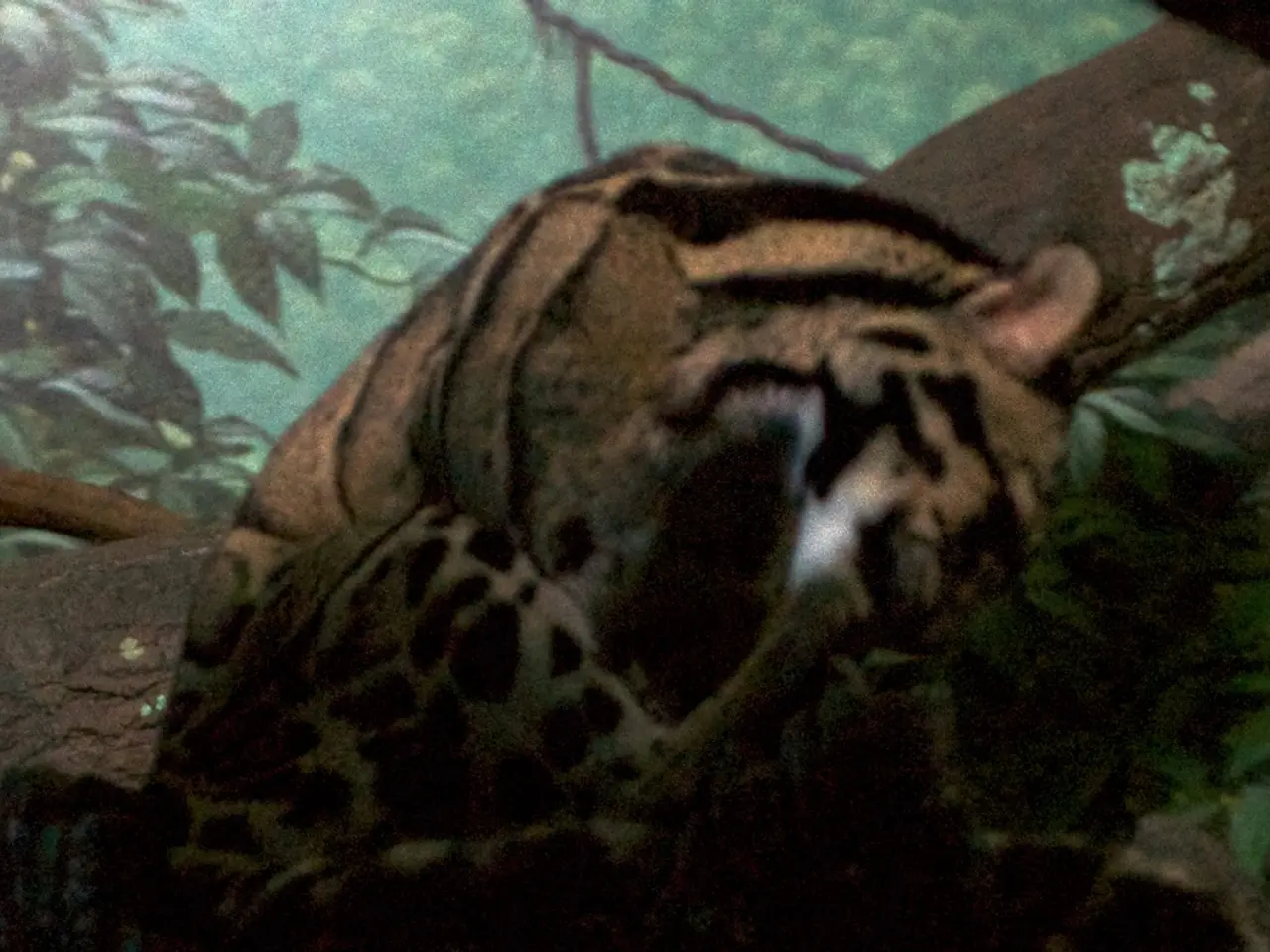Adversarial Network Architecture (GANs) Breakdown and Illustrative Examples
Generative Adversarial Networks (GANs) are a powerful deep learning architecture used for generating new, realistic data such as images, audio, and text. These networks are particularly effective for tasks like image synthesis, data augmentation, and creative editing [1][3][4][5].
GANs consist of two rival neural networks: the Generator and the Discriminator. The Generator creates fake data from random noise, aiming to mimic the real data distribution, while the Discriminator learns to distinguish between real and fake data [3][4][5].
The training process involves an adversarial competition between the two networks. The Generator improves by learning to fool the Discriminator into thinking the generated data is real, while the Discriminator improves by accurately detecting fake versus real data. This loop continues until an equilibrium is reached, where the Generator produces highly realistic samples indistinguishable from real data, and the Discriminator cannot reliably tell real from fake [4][5].
Key training concepts include adversarial training and gradient descent with backpropagation to update network weights based on feedback on their output accuracy [3][4]. However, GAN training is inherently unstable due to the simultaneous minimization of two loss functions [5].
To address this instability, it's common to freeze the discriminator's parameters during the generator's training [6]. This approach was used in an experiment with the MNIST image dataset, where a CNN discriminator with two convolutions, dropout layers, and a Dense layer with a sigmoid activation was combined with a generator starting with a dense layer, followed by reshape and deconv layers that increased spatial dimensions, and a final convolution to generate the final 1-channel image [7].
One challenge in training GANs is achieving stable convergence. This can lead to mode collapse, a situation in which the generator maps multiple points in the latent space to the same output or a narrow region in the output space. This can occur if the training process is imbalanced, and the generator trains too much compared to the discriminator [6][8].
Another experiment involved training two identical GAN architectures, one using the Stochastic Gradient Descent (SGD) optimizer and another using the Adam optimizer. The findings supported the claim that Adam optimizer is better for this task [7].
Exploring the trajectories in the latent space revealed that neighboring points tend to transform to similar images. The volume of the image space is huge, but most of it corresponds to completely meaningless images. A tiny portion of the space corresponds to meaningful images, and a smaller-still portion corresponds to digit images [9].
The region close to 0 in the latent space does not transform to a meaningful digit, possibly due to the non-linearity in the generator making 0 a natural border between digit blobs in the latent space [9]. As training progresses, the contours that the generator tries to learn improve with each discriminator learning phase [2].
GANs have applications beyond data generation, including improving the training of discriminative models, generating data for commercial and artistic purposes, and generating synthetic scenarios for various applications [1][3][4][5]. Despite their power, GANs still face challenges such as difficulty achieving stable convergence, high computational cost, potential bias from training data, and interpretability issues [1][5].
References: [1] Goodfellow, I., Pouget-Abadie, J., Mirza, M., Xu, B., Warde-Farley, D., Ozair, S., ... & Bengio, Y. (2014). Generative adversarial nets. Advances in neural information processing systems, 2672-2680. [2] Radford, A., Metz, L., Chintala, S., Chen, L., & Oord, A. (2015). Unsupervised representation learning with nuclear-norm regularized denoising autoencoders. arXiv preprint arXiv:1503.04062. [3] Salimans, T., Kingma, D. P., & Ott, J. (2016). Improved training of Wasserstein GANs. CoRR, abs/1607.03257. [4] Arjovsky, M., Chintala, S., Bottou, L., & Goodfellow, I. (2017). Wasserstein GANs. Advances in neural information processing systems, 6026-6035. [5] Gulrajani, T., Ahmed, S., Arjovsky, M., & Courville, A. (2017). Improved training of wasserstein gan through spectral normalization. Advances in neural information processing systems, 6335-6344. [6] Chen, X., & Schmidhuber, J. (2016). InfoGAN: A new framework for learning deep generative models with arbitrarily defined conditioning factors. arXiv preprint arXiv:1606.03657. [7] Mordvintsev, D., Chintala, S., Sarabandi, S., & Parascandolo, G. (2017). Inception score: A new quality measure for generative models. CoRR, abs/1704.00028. [8] Arjovsky, M., Bottou, L., Chen, L., Goodfellow, I., & Lim, J. (2017). Taming generative adversarial networks using spectral normalization. International Conference on Learning Representations, 1-9. [9] Chen, L., Liu, Y., Wang, Y., & Yan, Y. (2016). Dual learning for generative adversarial networks. Proceedings of the IEEE Conference on Computer Vision and Pattern Recognition, 1422-1430.
Artificial Intelligence (AI) can be utilized to enhance the Generative Adversarial Networks (GANs) by implementing optimizers such as Adam, improving the training process. Additionally, as GANs continue to evolve, they could potentially find applications in generating data for artistic purposes, expanding the realm where technology and art intersect.




